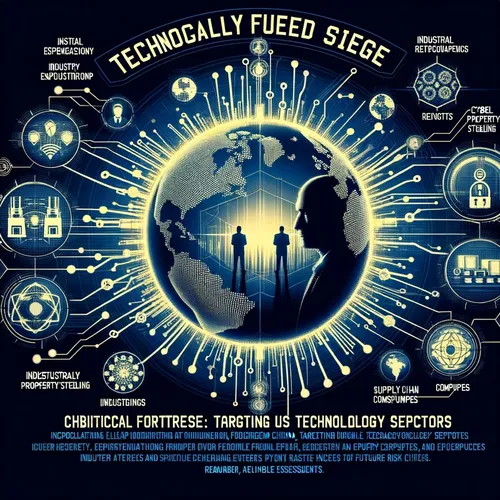Silicon Smackdown: China's Chip Chop Shops Sizzle as US Tech Titans Tussle
- Author
- Quiet. Please
- Published
- Mon 11 Aug 2025
- Episode Link
- https://www.spreaker.com/episode/silicon-smackdown-china-s-chip-chop-shops-sizzle-as-us-tech-titans-tussle--67334606
This is your Silicon Siege: China's Tech Offensive podcast.
I’m Ting, and here’s your Silicon Siege download. Over the past two weeks, Chinese state-linked operators have pushed a coordinated offensive across US technology sectors—industrial espionage, IP theft, and supply-chain pressure designed to shape who controls the next wave of AI and chips.
Let’s start with the crown jewels: GPUs. Reuters reporting summarized in multiple industry roundups says Nvidia and AMD struck a controversial deal with Washington to surrender 15% of China revenue on H20 and MI308 AI chips to secure export licenses—while Beijing’s state-affiliated CCTV-aligned voices blasted H20 as insecure and hinted at “backdoors.” Nvidia denies any backdoors, but the information warfare is the point: make US chips politically toxic inside Chinese ecosystems while keeping pressure on US supply lines. Tech roundups from this weekend highlight the deal’s backlash in markets and concern from national security circles that economic access is being traded for strategic risk. Analysts like Geoff Gertz at CNAS questioned the logic: either it’s a security risk or it isn’t. That ambiguity is being exploited.
Meanwhile, the cyber front hasn’t cooled. The Information Technology and Innovation Foundation warned that Chinese-backed groups like Volt Typhoon and Salt Typhoon remain embedded in US critical infrastructure—energy, water, telecoms, transportation—using living-off-the-land techniques to persist and stage disruption options. Their July analysis on Salt Typhoon and August brief on the Strengthening Cyber Resilience Act argue the campaigns are systematic, multi-sector, and tuned for long-term leverage, not smash-and-grab. That’s your industrial espionage and prepositioning blend: steal designs today, keep hands on the switches for tomorrow.
On intellectual property, the recent flurry around semiconductor know‑how highlights the gray zone. Trade and market digests flagged ongoing allegations of 2 nm secrets circulating via Taiwan-linked employees and brokers, reminding listeners how porous the broader chip supply web can be. Even when not directly attributed in court filings, these cases map to the same outcome: accelerate domestic Chinese alternatives while eroding US lead time.
Supply chains are being squeezed from both ends. US export controls resumed in a limited form with that 15% “tribute,” while Chinese state media amplified doubt about US components’ safety to nudge local buyers toward domestic silicon. A European market note observed that Chinese media’s sabotage claims against H20 were aimed at discouraging purchases, even as China still lacks sufficient high-end capacity—classic pressure to shift demand and buy time for domestic fabs.
Strategically, here’s the implication: the offensive is hybrid—lawfare around export licensure, influence ops to taint US tech credibility, and persistent access in US operators that could be flipped during crises. According to ITIF, a CISA-led joint task force is being positioned to unify response, but gaps remain against multi-actor threats and cross-sector campaigns.
What do experts see next? Expect more quiet compromises in managed service providers and device firmware, because supply-chain footholds scale better than flashy zero-days. Watch AI model weights, EDA toolchains, and packaging IP—high-value targets for stealth exfiltration. Anticipate more narrative ops claiming “safety” flaws in US chips to depress demand while negotiating for concessions. And watch for Volt Typhoon-style dwell-in-depth across utilities near defense and semiconductor corridors—think Texas, Arizona, Oregon—timed to trade talks and export renewals.
I’m Ting. Thanks for tuning in—subscribe for the next briefing. This has been a quiet please production, for more check out quiet please dot ai.
For more
